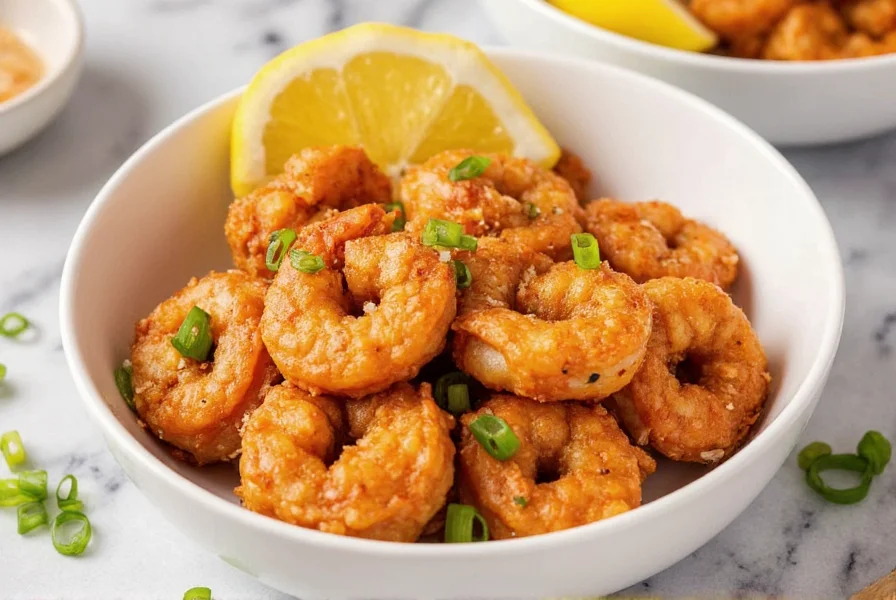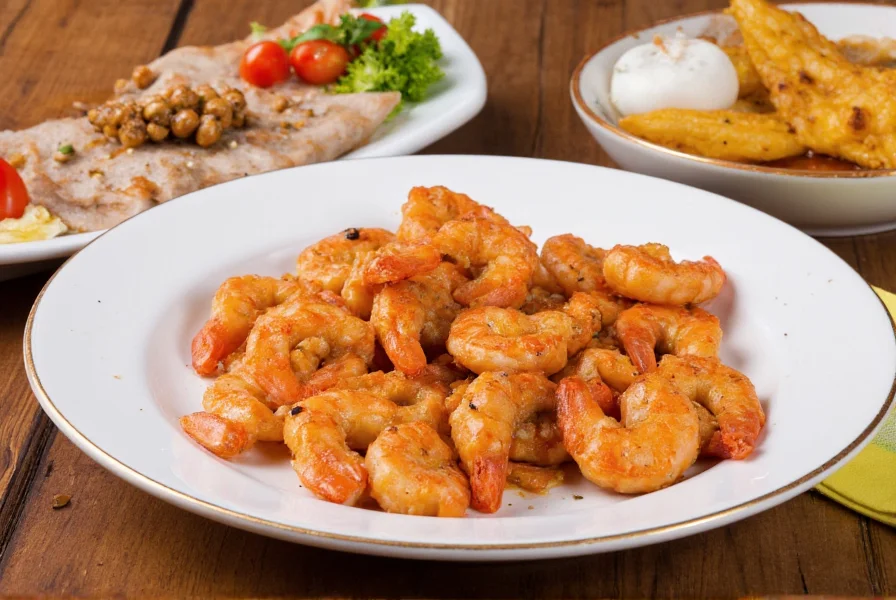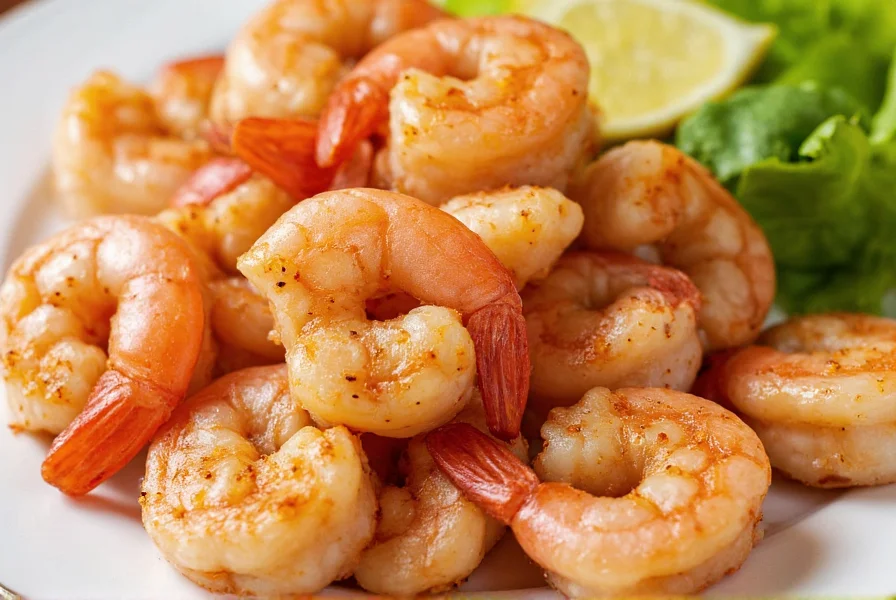For seafood enthusiasts seeking restaurant-quality results at home, mastering salt and pepper shrimp requires understanding several key elements that transform this simple dish into something extraordinary. This guide provides professional techniques developed through years of culinary experience to help you create consistently excellent results.
The Essential Components of Authentic Salt and Pepper Shrimp
What separates exceptional salt and pepper shrimp from mediocre versions comes down to precise ingredient selection and technique. The dish's simplicity means each component must be executed perfectly.
Shrimp Selection and Preparation
Medium to large shrimp (31-40 count per pound) work best for salt and pepper shrimp recipes. The shell-on variety provides superior flavor during cooking, though many home cooks prefer peeled shrimp with tails intact for easier eating. Proper preparation involves:
- Thorough drying of shrimp before cooking
- Strategic scoring to prevent curling
- Light cornstarch coating for optimal crispiness
- Correct oil temperature (350°F/175°C) for frying
Perfecting the Seasoning Blend
The "salt and pepper" in this dish's name is somewhat misleading—authentic versions use a complex seasoning blend where freshly cracked black pepper takes center stage. The ideal ratio includes:
| Seasoning Component | Proportion | Function |
|---|---|---|
| Freshly cracked black pepper | 2 parts | Primary flavor and aroma |
| Sea salt | 1 part | Flavor enhancer |
| Five-spice powder | 1/4 part | Complexity and depth |
| White pepper | 1/8 part | Subtle heat |
Step-by-Step Preparation Guide for Crispy Salt and Pepper Shrimp
Follow these professional techniques to achieve restaurant-quality results in your home kitchen. The process takes approximately 30 minutes from start to finish.
Ingredients for Four Servings
- 1.5 lbs (680g) medium shrimp, shell-on or peeled with tails
- 3 tbsp cornstarch
- 1.5 tsp freshly cracked black pepper
- 3/4 tsp sea salt
- 1/4 tsp five-spice powder
- 4 cloves garlic, thinly sliced
- 2 Thai chilies or 1 red chili, sliced (optional)
- 1 small onion, thinly sliced
- 2 scallions, cut into 1-inch pieces
- 3 cups neutral oil for frying
- 1 lemon, cut into wedges
Cooking Instructions
- Prepare shrimp by removing veins if necessary, then thoroughly pat dry with paper towels
- Mix cornstarch with 1/2 tsp black pepper and 1/4 tsp salt, then coat shrimp evenly
- Heat oil in wok or deep skillet to 350°F (175°C)
- Fry shrimp in batches for 1.5-2 minutes until golden and crispy
- Drain on wire rack, not paper towels, to maintain crispiness
- Reserve 2 tbsp oil, sauté garlic, chilies, and onions for 30 seconds
- Add fried shrimp, remaining seasoning, and scallions, tossing for 1 minute
- Serve immediately with lemon wedges

Avoiding Common Salt and Pepper Shrimp Mistakes
Even experienced home cooks encounter challenges with this deceptively simple dish. Understanding these pitfalls ensures consistent success:
Mistake: Soggy Shrimp Texture
Solution: Moisture is the enemy of crispiness. Ensure shrimp are completely dry before coating, maintain proper oil temperature (use a thermometer), and avoid overcrowding the wok during frying. Drain on a wire rack rather than paper towels to prevent steam buildup.
Mistake: Bland or Overpowering Seasoning
Solution: Use freshly cracked pepper rather than pre-ground, and toast the peppercorns lightly before cracking for enhanced aroma. Balance the seasoning by adding incrementally and tasting as you go. Remember that the saltiness will intensify as the dish cools.
Mistake: Uneven Cooking
Solution: Score the underside of each shrimp to prevent curling, which ensures even cooking and better seasoning distribution. Fry in small batches to maintain consistent oil temperature throughout the process.
Regional Variations and Creative Adaptations
While the classic Cantonese version remains popular, regional interpretations offer interesting alternatives for adventurous cooks:
- Hong Kong style: Incorporates chopped salted fish for umami depth
- Taiwanese variation: Adds basil leaves during the final toss
- Sichuan twist: Includes a pinch of Sichuan peppercorns for numbing sensation
- Health-conscious version: Air-fry method with modified coating technique

Serving Suggestions and Pairings
Salt and pepper shrimp shines as both an appetizer and main course. For complete meal planning:
- Pair with steamed jasmine rice to balance the bold flavors
- Complement with light vegetable dishes like stir-fried bok choy
- Serve alongside a crisp white wine like Riesling or Pinot Grigio
- Consider adding a dipping sauce station with chili oil and lemon wedges
Storage and Reheating Guidelines
While best enjoyed immediately, properly stored salt and pepper shrimp maintains reasonable quality for short periods:
- Refrigerate in airtight container for up to 24 hours
- Reheat in air fryer at 350°F for 3-4 minutes to restore crispiness
- Avoid microwave reheating, which creates sogginess
- Do not freeze, as texture deteriorates significantly











 浙公网安备
33010002000092号
浙公网安备
33010002000092号 浙B2-20120091-4
浙B2-20120091-4